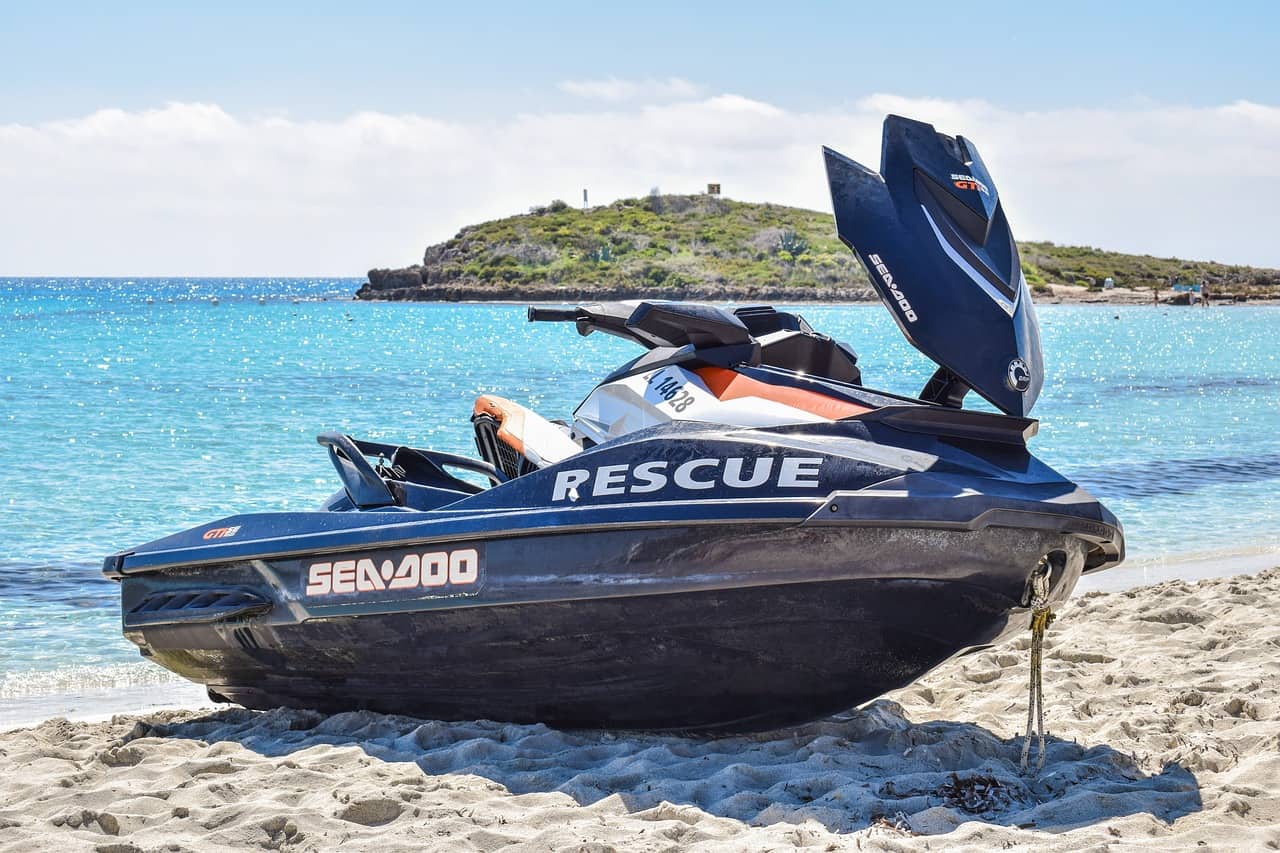Jet Ski Maintenance Guide

There are few things more enjoyable than spending a long summer day on the water, and jet skis offer you a way to have this fun without spending a king’s ransom on a boat and its associated mooring and running costs. Jet skis are durable and well-built machines that do not require much in the way of service or maintenance, but there are still a few things that you should take care of on a regular basis.
Jet Ski Maintenance
If you see a broken down or stranded Sea-Doo, WaveRunner or Tigershark, chances are good that the rider cut corners before setting out. Here are five things you can do before and after every ride to get the most out of your jet ski.
- Prepare: While jet skis are fairly simple to operate, they are complex machines that need a little TLC. Before going on your first ride, you should check your owner’s manual to find out when your jet ski will need to be serviced. This is usually 50 engine hours. That means if you use your jet ski for 30 hours each year, servicing will be an annual chore. The owner’s manual can also tell you the type of fluids and tools you will need to maintain your jet ski.
- Visual inspection: You should check that your jet ski is in good working order before every ride. This task only takes a couple of minutes and involves looking for loose wires and damaged parts. Also, check for oil leaks and have a look to see if the hull has been damaged by close encounters with rocks or other hazards.
- Check for the smell of gas: Check your owner’s manual to find out where your jet ski’s fuel lines are, and then make sure they are connected securely. Leaking fuel vapors can be set off by something as seemingly innocuous as a loose battery cable or a faulty starter motor.
- Washing: You should wash your jet ski regularly. Saltwater is not only corrosive, but it can also stain windshields and seats. Remove any bungs or bung plugs to allow water to drain, and pay particular attention to the area under the fuel tank to prevent a siphon bilge blockage. This action is not as hard as it sounds as most modern jet skis have a hose connector to make cleaning easier.
- Flushing: Using a hose to rinse off your jet ski after a ride is a task that should never be ignored. Spraying clean water for just a few minutes can nip corrosion in the bud and avoid costly repairs. You should flush your jet ski even if you use it on a lake as sand and algae can cause almost as many problems as saltwater. Make sure to flush your jet ski on level ground to avoid all of the salt, sand and algae accumulating in one spot.
Jet Ski Service
Jet skis and waverunners do not require as much servicing as cars or boats, but they do need some. If you want to enjoy trouble-free days on the water while adding years to the life of your jet ski, you should take care of these five tasks.
- Remove old fuel: You probably don’t think about it much when you fill up your car, but fueling a jet ski is a little more complicated. Pump gas has a shelf life of between three and six months, which means that old fuel should be removed from your jet ski at the start of every season. A few dollars invested in fuel cleaners and stabilizers would also be money well spent.
- Maintain fluid levels: Check your oil by pulling out the dipstick. If the oil looks milky, your jet ski is probably due for a service. Fluid levels are critical if your jet ski has a two-stroke engine that runs on a mix of fuel and oil.
- Annual service: Finding a business happy to service your jet ski will not be difficult, but you can quickly do the job yourself if you are willing to roll your sleeves up and get dirty. An annual jet ski service usually includes changing the engine oil and oil filter, replacing the spark plugs, lubricating moving parts and applying grease to seals and bearings. Your owner’s manual will probably contain clear step-by-step servicing instructions.
- Winterize: A little time spent preparing your jet ski for its long winter break will pay dividends when summer rolls around again. Your winterizing ritual should start with a good wash and rinse and finish with lubrication and a wipe down. Run the engine in 20-second bursts until it stops spitting out water, and then remove the spark plugs and spray fogging oil in the empty cylinders. These maintenance measures will lubricate your engine’s internal parts while it is idle for a while.
Then replace the spark plugs and wipe up any overspray. If you live in a cold climate like the Northeast, you should also winterize your jet ski’s exhaust system by running a half water and half antifreeze solution through the engine. The final step is draining the fuel out of your jet ski or adding a fuel stabilizer.
- Get a jet ski lift: A jet ski lift keeps your pride and joy out of harm’s way, as it protects intakes and prevents hull delamination. A lift also makes swashing, maintaining and servicing a personal watercraft far easier. Learn more about how a jet ski works.
Take the Plunge

Check out Sea the City in New York
If you like the idea of enjoying the water on a personal watercraft but would prefer to try before you buy, a Sea the City jet ski tour could be just what you are looking for. Prices for New York City tours that include the Statue of Liberty, the Wall Street heliport and the Brooklyn and Manhattan bridges start at just $169. What’s more? The launching point is only 10 minutes from midtown!
